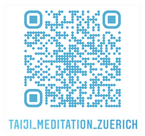TAiji
Taiji has evolved into a series of soft, slow, gentle movements coordinated with concentration of the mind and breath.
It can be practised by people of all ages and health conditions. Externally, Taiji is the art of movement for health and self-defence. Internally, Taiji is the science of the mind and inner
energy or Qi. It leads people out of everyday consciousness and inwards - to inner realisation, inner peace and inner strength.
By practising the Tai Ji form we develop inner strength. The partner exercises (Pushing Hands/Tuishou) develop sensitivity. Because of the interaction with another person, the Pushing-hands are
more complex. Here we can bring in and test what we have practised in the loosenings and form. An intermediate step to bring the practices and the developed inner elastic strength back into our
daily life.
We train Taiji on three levels: Body, Mind and Spirit (earth, human and heaven). The mind in its deepest aspect (Deep Mind) is at the centre of the training process for us.
Aspects in Taiji training
1. Self-defence
Taiji is seen as the practice of Daoist principles, e.g. the soft overcomes the hard. A Taiji ideal is to be both soft and strong. Over time, we learn to properly manage and apply the strength
and energy of ourselves, as well as our practice partners. Regardless of the size, weight or strength of our opponent. However, the possibility of self-defence is only a positive side effect for
us and is not the focus.
2. Promotion of physical health
- Deep breathing promotes oxygen circulation. The increased supply of oxygen improves the function of the internal organs, including the immune system.
- The gentle movements not only promote mobility and coordination, but also the circulation of but and body fluids. This strengthens the internal organs as well as the muscles and bones and the immune system.
- Spirit (Mind) moving through the body with intention promotes the circulation of energy. From Chinese medicine we know the importance of the state of energy flow in our body for health.
3. Inner refinement
Every Taiji class begins by pulling the mind back from the outer world and inwards. In the beginning, deep breathing helps us to do this.
Then we begin to perceive the inner sensors and continue inward through the energy field of the body. (Close down the mind)
Only then does the actual inner work begin. The mind in its deepest aspect (deep mind) is central to the training process.
If we look at Taiji as energy training, this includes the training of intention, consciousness and intelligence within the Middle Dantien, the level of deep emotions. In the Middle Dantien, the
main work for us takes place in inner refinement.


